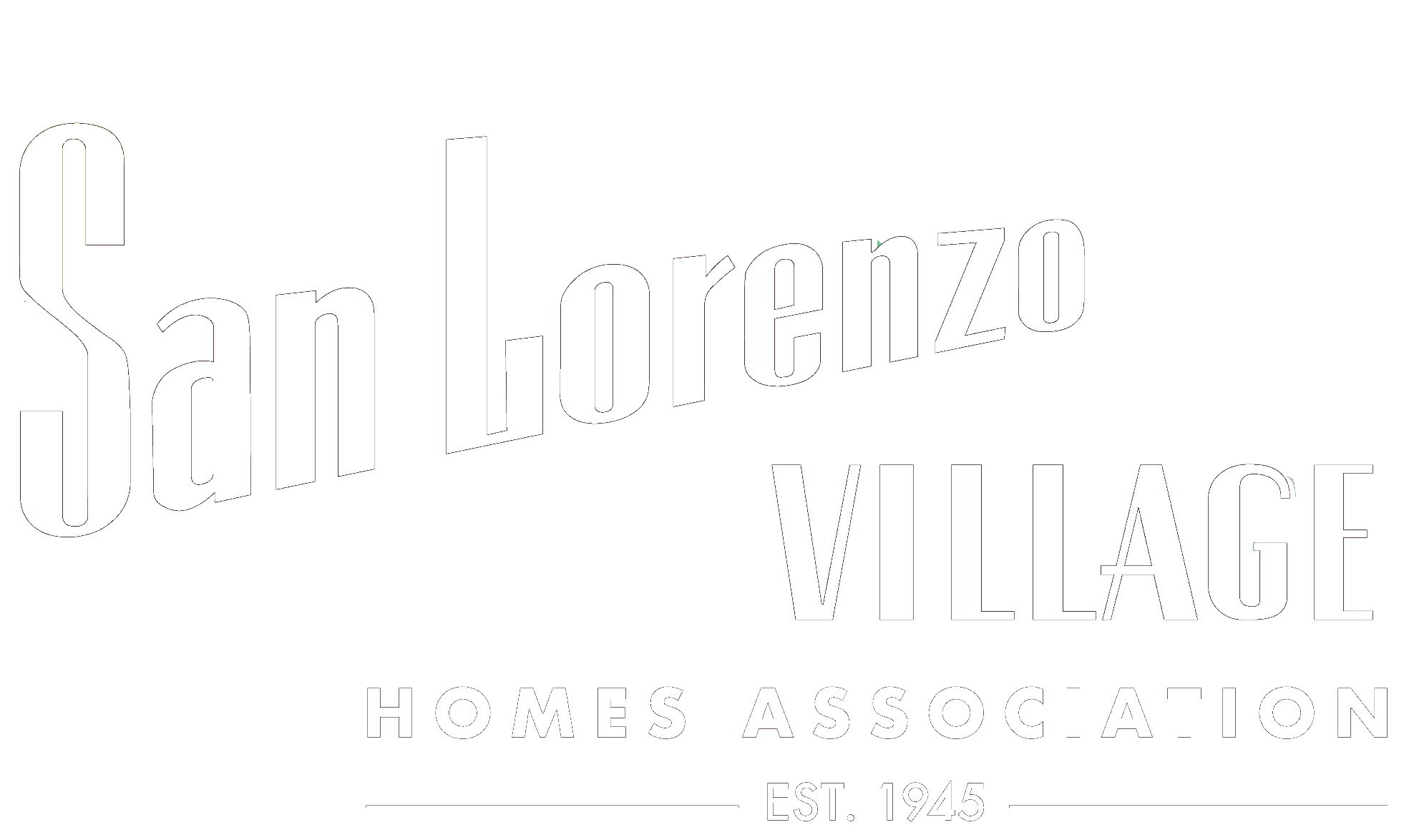Purpose of San Lorenzo Village Homes Association’s CC&Rs
What are “CC&Rs”?
Technically (and within the context of residential neighborhoods), a covenant is a rule governing the use of real property. However, in common usage, it may also refer to a promise or agreement (as formalized in a deed) concerning the use of the land, as where a purchaser of land “covenants” to abide by certain restrictions associated with the use of the land. Essentially, such covenants are promises made by a prospective purchaser as a condition of purchasing the land in question.
Covenants are often lumped together under the collective term of “covenants, conditions, and
restrictions” or CC&Rs, a term commonly found in real estate documents. Since most covenants involve some kind of condition or restriction placed upon the buyer, the collective term “CC&Rs” has been more widely used in recent years to indicate the existence or future existence of limitations associated with the use of the purchased land. Property owners agree to stringent covenants and conditions that restrict the use and enjoyment of their own property for two main reasons:
-
First, and most importantly, homeowners want to maintain or enhance the property’s value.
-
Second, homeowners want to use and enjoy their property without annoyance, distraction, or offensive use by their neighbors that falls short of being an actual violation of any existing law.
CC&Rs Vs. Alameda County Neighborhood Preservation Ordinance (NPO)
Covenants differ from zoning ordinances in that they are between private parties rather than between a governmental entity and a private party. Thus, a neighborhood association or single homeowner may enforce a covenant as against another homeowner, rather than the county enforcing a zoning ordinance as against a private citizen. Another difference is that zoning ordinances are regulations recorded as local laws “on the books,” whereas covenants are recorded in private deeds, either as deed restrictions or as neighborhood compacts between private parties. Because covenants are voluntary, they may be more restrictive that zoning ordinances.
What Zoning Ordinances Can Regulate
Zoning ordinances are limited in what they can control; they cannot control what type of person moves into a neighborhood and/or how he will maintain his property. Although Alameda County does have laws protecting residents from unsafe or unhealthy conditions on neighboring property, there is little they can do to prevent clutter, poor appearance, or just “bad taste.” These indiscretions can cost a neighboring property thousands of dollars in appraised value, and can also impair home buyers’ interest in it, should the owners attempt to move away from the offending property. Zoning laws can change, leaving residents unprotected from the possibility that a strip club or deer-processing plant might move in.
What CC&Rs Can Regulate
Covenants regulate what property owners in a particular area can or cannot do with their property. When a geographically-restricted group of homeowners are bound by neighborhood covenants, individual homeowners are better insulated from the possibility that one errant homeowner will bring down the value of surrounding properties because of the appearance of his or her house. Covenants ostensibly ensure that a residential area will remain a desirable one to live in; that the properties contained therein will retain their value; and that, in return for some minor sacrifices, homeowners will be able to better enjoy their own properties.
Covenants can range in subject matter from the prohibition of flagpoles in the front yard to restrictions in outdoor music during certain hours. They may limit the colors a homeowner may paint a house or the type of shrubs and trees used to landscape around it. They may control pets, vehicle parking on lawns, basketball hoops or remote-control toys. While many people are accustomed to such restrictions when renting or leasing residential properties, they do not realize that such limitations also can be placed on properties they own. “It’s my property and I can do what I want with it” is a common retort that provides little defense for a home-owner who has breached a covenant attaching to his or her property.
Information from realestate.findlaw.com website

